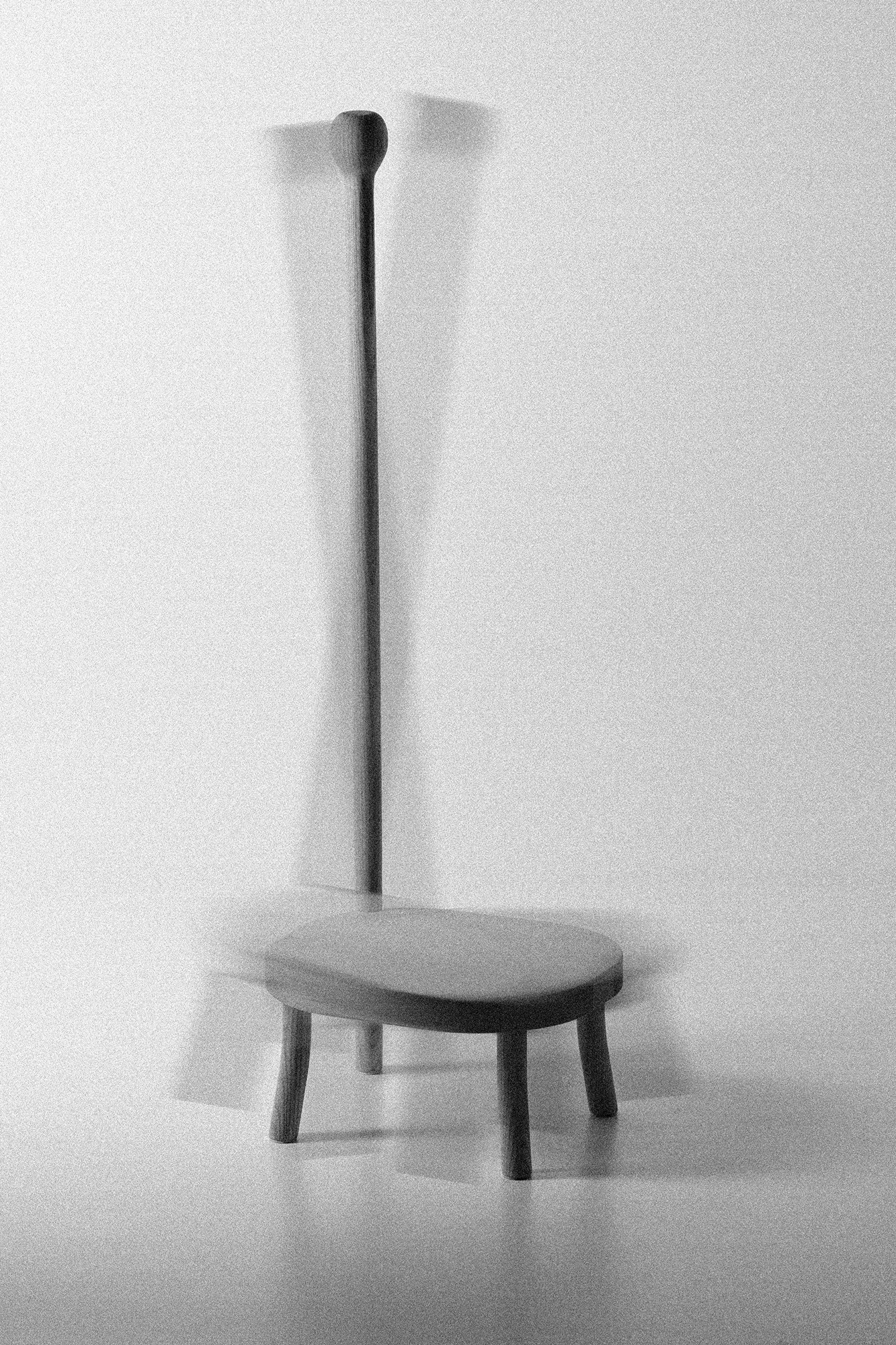eduardo Altamirano: in the process of hyperlocality
PRODUCTION: Ademán
product photography:
Eduardo Altamirano
text: Sofia Arredondo

Eduardo Altamirano’s (Guadalajara, Mexico) practice inhabits the limbo between industrial design and artistic installation, where objects cease to be mere tools to become carriers of material narratives. His work —as precise as a Swiss algorithm and as organic as the landscape of Jalisco— questions the very ontology of materials: What does it mean to work with wood in a world of forest exploitation? How can a loudspeaker reveal, rather than conceal, its own sonic mechanics?
His training at ECAL (Switzerland), a temple of conceptual design where every decision must be justified under the rigor of "why," led him to develop a method that combines technical discipline with an almost anthropological sensitivity toward materials. Projects like Sonido Material (2024) —his master’s thesis— not only exhibit this duality but push it to the extreme: by stripping the speaker of its industrial casing and reducing it to a vibrating paper spiral, Altamirano confronts us with the primal act of listening. Here, sound becomes tangible, as if we could touch hertzian waves with our fingers. This piece, never intended to be commercial, functions more as a manifesto: technology should be experiential, not opaque.
Color in his work is not decorative but structural. It emerged from a project to revalue Swedish pine in China —where the material was underestimated— through dyes that revealed its aesthetic potential without altering its essence. This discovery accompanied him back to Mexico, where chromatism became a bridge between local tradition and radical experimentation. In The Atrium Chair (2025), for example, the deep violet of the ash wood is not a whim: it nods to Attolini Lack’s emotional architecture while asserting that "humble" materials can be vehicles for conceptual luxury.
Hyperlocality is another pillar of his process.When working in a studio surrounded by discarded metal he adopted steel not just as a material, but as a language; when researching craft techniques in Jalisco, rattan and palm were integrated into his prototypes. This adaptation is not pragmatic but ethical: he rejects overexploited exotic woods and prioritizes what’s available within his immediate radius, reducing ecological footprint without sacrificing visual power.







INTERVIEWER
Lightness in your work
Eduardo Altamirano
I think lightness is a concept that’s very present in my mind right now. It’s an interesting challenge to achieve lightness, which can be understood from different angles. The most obvious is weight, but it also relates to processes, energy consumption, and how an object coexists in a space.I find it surprising that, in this era, designers are still creating massive products. There is no longer space for that approach, and I don’t believe it’s what we need in Mexico.
INTERVIEWER
The function follows form-concept
Eduardo Altamirano
Yes, function is always linked to form or concept, but sometimes it’s more about following intuition. My creation process is a bit unusual—sometimes it follows a traditional approach, while other times, I discover things by accident. Somehow, I feel that’s where the most exciting ideas come from—acting clever, yet staying raw.
INTERVIEWER
The sound that makes you rest
Eduardo Altamirano
The sound of Wind.
Lightness in your work
Eduardo Altamirano
I think lightness is a concept that’s very present in my mind right now. It’s an interesting challenge to achieve lightness, which can be understood from different angles. The most obvious is weight, but it also relates to processes, energy consumption, and how an object coexists in a space.I find it surprising that, in this era, designers are still creating massive products. There is no longer space for that approach, and I don’t believe it’s what we need in Mexico.
INTERVIEWER
The function follows form-concept
Eduardo Altamirano
Yes, function is always linked to form or concept, but sometimes it’s more about following intuition. My creation process is a bit unusual—sometimes it follows a traditional approach, while other times, I discover things by accident. Somehow, I feel that’s where the most exciting ideas come from—acting clever, yet staying raw.
INTERVIEWER
The sound that makes you rest
Eduardo Altamirano
The sound of Wind.
Yet perhaps the most subversive aspect of Altamirano is his approach to functionality. Estándar (2021), a chair with modular measurements and stackable form, seems to comply with modernist "good design," but its version dyed with Mexican pigments —indigo blue, cochineal red— betrays its true agenda: to democratize access to design without resorting to folklorism. Equally provocative is Audio Máquina (2024), whose dismountable speakers defy planned obsolescence, allowing every component to be repaired or recycled.
In his role as art director for small brands, Altamirano translates these principles to larger scales: collections that are three-dimensional essays on color as identity, or craft as ancestral technology. Here, as in his autonomous pieces, an unwritten motto persists: design must interrogate before it pleases.
In his role as art director for small brands, Altamirano translates these principles to larger scales: collections that are three-dimensional essays on color as identity, or craft as ancestral technology. Here, as in his autonomous pieces, an unwritten motto persists: design must interrogate before it pleases.